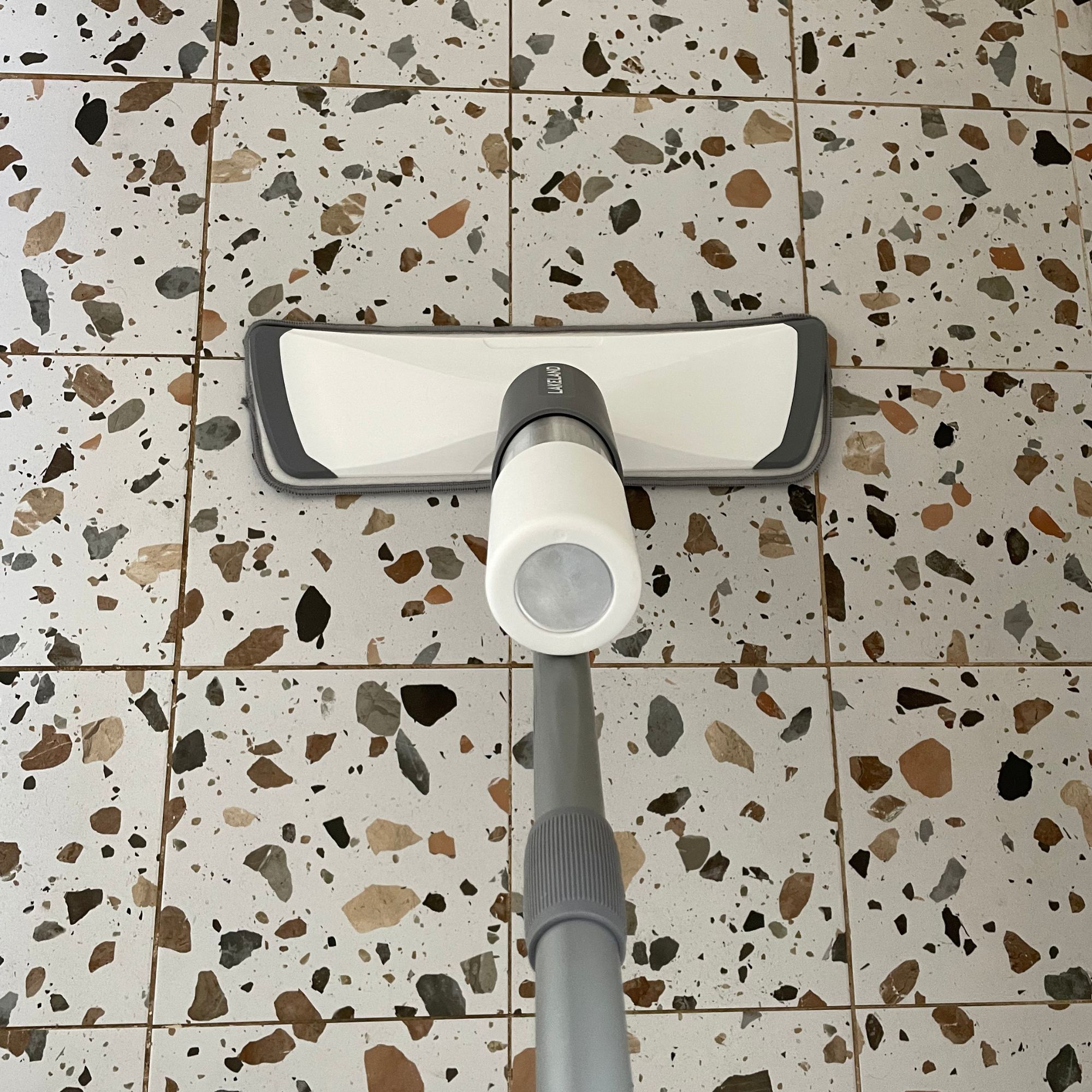How to draught-proof a front door — expert-approved tips to shut out the cold and prevent internal heat from escaping
Experts reveal how to identify the problem areas and what you’ll need to seal your home from the elements


If you feel a breeze every time you walk through your hallway, you’re spending a fortune on your energy bills but your house still feels cold, or you can see noticeable gaps around your front door, it’s highly likely that you need to draught-proof your front door. Thankfully, this is easy enough to do.
Yes, if you’re trying to save energy at home, it’s essential to draught-proof your home to shut out the cold and prevent internal heat from escaping. But while most people focus their attention on draught-proofing a window, many forget that a front door can be just as unforgiving during the winter months. After all, gaps around a front door can open your home to the elements.
As Michael Zohouri, founder of The Retrofitters, explains, ‘Draughts are a nuisance, but they can also lead to noticeable heat loss from a home, meaning the heating system has to work harder to keep the property at the required temperature. This adds to heating bills, so these simple draught-proofing solutions really are a no-brainer.’ So, this is how to draught-proof a front door.
1. Identify the location of the draughts

Before you take steps to draught-proof a front door, you must first determine where the draughts are coming from. After all, you don’t want to spend your hard-earned time and money on buying and fitting products that don’t solve the problem.
That's why Joe Ragdale, Technical Director at Wetherby Building Systems, advises, ‘The first thing you’ll want to do is inspect the door frame for any visible gaps around the edges, especially at the top, sides, and bottom of the door. Then, check the threshold (the strip at the bottom of the door) for gaps where the door meets the floor. Our top trick is to hold a lit candle or incense stick near the edges of the door—if the flame flickers, it indicates a draught.’
Of course, it may be that you only spot one problem area, or you could be unlucky and have multiple. But draught-proofing may not be the only solution.
Joe says, ‘Before purchasing draught-proofing materials, it’s worth checking if the draft is caused by loose hinge screws. Lift the door by the doorknob to check for any movement. If the door moves upwards, simply tighten the top hinge screws – this could be all you need to solve the issue.’
Get the Ideal Home Newsletter
Sign up to our newsletter for style and decor inspiration, house makeovers, project advice and more.
If that doesn’t solve the problem, you can choose one of the following front door draught-proofing options instead.
2. Attach a door sweep

If you’ve noticed a draught from the bottom of your front door, a door sweep will likely solve your problem. These are extremely affordable and easy to find both in-store and online. Plus, they’re easy enough for the average DIY-er to install themselves.
Glen Peskett, DIY expert and owner of Saxton Blades Multitools, explains, ‘You can attach a door sweep or brush strip to the bottom of your door. This seals the gap between the door and the floor, preventing cold air from entering and keeping warm air inside. Door sweeps are an easy and simple option as they don't need much to be installed and are available in adhesive or screw-on options.’
To draught-proof a front door that gets a lot of use, however, we’d suggest opting for a heavier-duty door sweep - ideally one made from metal rather than plastic, like this Stormguard Heavy Duty Bottom Door Brush from Dunelm. This will also make it easier to clean if dirty shoes get in the way.
3. Seal the letterbox

Draught-proofing relies on sealing the outside world from the inside world. Still, most people forget that letterboxes can’t be sealed from the elements - unless you opt for a freestanding or wall-mounted letterbox like this Emtronics Wall Mountable Post Box from Robert Dyas.
And as Glen warns, ‘This is one place where a lot of people might not realise how much hot air escapes and cold air can easily get into the house.’
Thankfully, there are ways to draught-proof a letterbox, and the most common option is to use a specific letterbox draught excluder. ‘This typically includes a brush or flap to seal gaps while still allowing the post to be delivered. This helps in keeping cold air out as a small and effective measure to draught-proof your door,’ explains Glen.
As so many people struggle with draughts through their letterboxes, you’ll be happy to know that there are so many letterbox draught excluders on the market, so you can easily find one to suit your front door colour idea. However, the Stormguard Internal Metal Mailbox Brush Case with Cover from Amazon is very highly rated.
4. Use self-adhesive foam strips

Self-adhesive insulation tape and strips are a firm Ideal Home favourite, and our Managing Editor, Thea Babington-Sitt, swears by the UPSEN Weather Stripping Tape from Amazon for keeping her single-glazed Victorian flat draught-free in winter. And it’s not hard to understand why she loves it, either. It’s easy to install, affordable, and extremely effective - especially when you want to draught-proof a front door.
As Joe explains, ‘The leading cause of a draughty front door is gaps around the door frame. Over time, the seals around the door can deteriorate due to wear and tear, causing gaps that allow cold air to enter and warm air to escape. There are a few reasons these gaps may develop, but usually, it’s down to improper installation, the natural settling of the house, or simply the ageing of the door and its components.’
Thankfully, you can use these self-adhesive foam strips to fill these gaps and prevent draughts in your home. All you need to do is cut the length you need, peel off the self-adhesive backing, and stick it around the edges of your door frame. This will then create the ultimate seal.
5. Invest in a draught-excluder

If you don’t want to make any permanent changes or installations to draught-proof your front door but know that the draught is coming in through the gap at the bottom, you could also use a draught excluder. Often called door snakes, these products can be placed on the floor in front of the gap to block the draught.
A benefit of using a draught excluder to draught-proof your front door is that they are typically the most stylish and aesthetically pleasing draught-proofing options out there. They come in so many shapes and forms - from this Multi Bright House of Fun Cut Velvet Draught Excluder from Next to this Luxury Weighted Draught Excluder from Dunelm - so you can match them to your home decor.
Glen adds, ‘This is a quick and non-permanent solution, which makes it easier if you want to move them around the house. You could purchase a fabric-filled tube or weighted door snake and place it along the base of the door as a simple solution.’
6. Add some curtains

Did you know? Door curtains are back - and, thankfully, for those who want to draught-proof a front door, we think they’re here to stay. This means that you can adorn your front door with curtains and know that they’re not only looking good. They’re also keeping the heat in and the draughts out.
As Michael explains, ‘Hanging thick curtains as an extra barrier is an effective way to eliminate draughts, too.’ You just need to make sure that you have the space to install a curtain rail above your front door, as you should avoid installing it on the front door itself.
When you have the curtain rail in place, you can then choose whatever curtain idea you want. You could go bold and bright or opt for something more neutral. Personally, I love these Ruskin Thermal Eyelet Door Curtains from Dunelm, as they come in a variety of sizes and two different colourways.
7. Test and adjust

The above options should be enough to draught-proof a front door, but it’s still worth checking it’s worked when you think you’ve finished. This ensures that you fully seal your home off to the elements and don’t get any nasty surprises later down the line.
Joe says, ‘Once you’ve applied your draught-proofing materials, test the door again with a candle or incense stick. If the flame flickers, it means you need to seal up any remaining gaps. Focus on areas like the bottom or sides, and make adjustments as needed. After closing the door, check for any draughts or wind noise. If you find any weak spots, reinforce them with more weatherstripping or caulk.’
He adds, ‘Remember, over time, weatherstripping and caulk can wear out, so it’s a good idea to check the seals annually, especially before the colder months, to keep everything working effectively.’
FAQs
Why is my front door so draughty?
There are countless reasons why your front door is so draughty, but the most common reasons include:
- You have gaps around your door frame.
- Your letterbox is not sealed enough.
- Your door’s weatherstripping has failed and needs to be replaced.
- Your door’s hinges are loose.
- Your door is not aligned properly.
How do I make my front door airtight?
It’s hard to make your front door completely airtight, especially if you still want to have a working letterbox. But the best way to make it as airtight as possible is to fill every single gap with weatherstripping. This can be placed around the door, underneath the door, and along any other gap you can find.
As it’s self-adhesive, it’s also incredibly easy to install and move if you put it in the wrong place. So, it’s well worth stocking up over the winter months.
Now you know how to draught-proof a door, it’s time to get started!

Lauren Bradbury has been the Content Editor for the House Manual section since January 2025 but worked with the team as a freelancer for a year and a half before that. She graduated with a Bachelor’s degree in English and Creative Writing from the University of Chichester in 2016. Then, she dipped her toe into the world of content writing, primarily focusing on home content. After years of agency work, she decided to take the plunge and become a full-time freelancer for online publications, including Real Homes and Ideal Home, before taking on this permanent role. Now, she spends her days searching for the best decluttering and cleaning hacks and creating handy how-to guides for homeowners and renters alike, as well as testing vacuums as part of her role as the Ideal Home Certified Expert in Training on Vacuums, having spent over 110 hours testing different vacuum models to date!
You must confirm your public display name before commenting
Please logout and then login again, you will then be prompted to enter your display name.
-
 Should an air fryer be on display in a kitchen or hidden away? This is why I always keep my small appliances on the worktop
Should an air fryer be on display in a kitchen or hidden away? This is why I always keep my small appliances on the worktopAre you on team display or neatly hidden away? Share your opinion in the comments
By Rebecca Knight
-
 Experts warn that these 5 mopping mistakes are making your floors dirtier — and damaging your floors in the process
Experts warn that these 5 mopping mistakes are making your floors dirtier — and damaging your floors in the processThis is how to keep them clean and avoid costly damage
By Lauren Bradbury
-
 Move over, fences – dead hedges are the wild and wonderful alternative your garden will love and they're easier to build than you'd think
Move over, fences – dead hedges are the wild and wonderful alternative your garden will love and they're easier to build than you'd thinkThe perfect eco-friendly solution for small gardens
By Kayleigh Dray